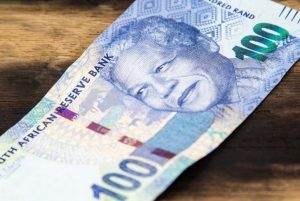DOLLAR RISES FROM 14-MONTH LOW, YUAN DIPS
The dollar bounced off a 14-month low against the euro on Wednesday in choppy trading, but investors held onto bets that the Federal Reserve will make another large interest rate cut at its November meeting on weakening labor optimism. The yuan also eased on growing doubts about the impact of a new round of Chinese stimulus and after the initial rally on the news was seen as overdone. The greenback tumbled on Tuesday after data showed that U.S. consumer confidence dropped by the most in three years in September amid mounting fears over the labor market. “The narrowing in the labor market differential, which is sort of indicative of demand and supply conditions in the employment market, was a very bad omen for the U.S. economy,” said Karl Schamotta, chief market strategist at Corpay in Toronto. “Markets are interpreting this as a sign that the Federal Reserve is very likely to deliver a second emergency-sized cut at its November meeting,” he added. Traders are now pricing in 59% odds of a 50-basis point cut at the Fed’s Nov. 7 meeting, up from 37% a week ago, and a 41% chance of a 25 basis point reduction, according to the CME Group’s FedWatch Tool. The Fed last week kicked off an anticipated series of interest rate cuts with a larger-than-usual half-percentage-point reduction that Fed Chair Jerome Powell said was meant to show policymakers’ commitment to sustaining a low unemployment rate now that inflation has eased. Data on Wednesday showed that sales of new U.S. single-family homes fell less than expected in August. This week’s main U.S. economic focus will be the Personal Consumption Expenditures index for August on Friday. The euro EUR=EBS was last down 0.41% at $1.1134 after earlier reaching $1.1214, the highest since July 2023. The dollar index =USD rose 0.68% to 100.91. It earlier fell to 100.21, matching a low from Sept. 18, which was the weakest since July 2023.

STERLING RISES VERSUS DOLLAR AND EURO ON STRONG RISK APPETITE
Sterling rose on Thursday to within striking distance of its two-and-a-half-year peak against the dollar after China’s stimulus plan boosted investors’ risk appetite. The pound usually appreciates when investors go for risky assets such as equities, which jumped on Thursday. Monetary policy divergence between the Bank of England and other major central banks is also providing support to the British currency. Stickier-than-expected UK inflation has fed expectations for a more gradual BoE easing cycle, while the Federal Reserve’s focus has shifted to the need to support the labour market by easing monetary conditions. “We think higher yield differentials will support the pound against the dollar over time,” said Patrick Ernst, director of forex investment strategy at UBS. “We expect the pair (sterling versus dollar) to gradually move higher but note that temporary setbacks are possible following the latest rally,” he added. Sterling GBP=D3 rose 0.24% in morning trade to $1.3350 after hitting $1.34275 on Wednesday, its highest level since February 2022. Analysts forecast similar economic and monetary policies in the UK and in the euro area. “Higher yield differentials and a further pricing out of political risks will lend modest support to the pound over time (versus the euro),” UBS’ Ernst said, adding that he expects the pound to remain range-bound at 83-85 pence per euro. Against the common currency EURGBP=D3, the pound rose 0.15% to 83.45 pence after trading on Tuesday around its highest level since April 2022, at 83.15.

DOLLAR WEAKENS AFTER INFLATION DATA, YEN SURGES ON ISHIBA WIN
The dollar fell on Friday after a reading of U.S. inflation signaled price pressures continue to ebb, while the yen strengthened against the greenback after Shigeru Ishiba, seen as an interest rate hawk, was set to become Japan’s next prime minister. The U.S. personal consumption expenditures (PCE) price index rose 0.1% in August, matching expectations of economists polled by Reuters, after an unrevised 0.2% gain in July. In the 12 months through August, the PCE price index increased 2.2% after rising 2.5% in July. In addition, consumer spending, which accounts for more than two-thirds of U.S. economic activity, rose 0.2% last month after an unrevised 0.5% gain in July. The data was slightly below the 0.3% estimate but indicated the economy still maintained some momentum in the third quarter. The Federal Reserve has recently signaled a shift in focus away from inflation and towards keeping the labor market healthy, but delivered a larger-than-usual interest rate cut of 50 basis points (bps) last week. “(Fed Chair) Powell can breathe a little sigh of relief,” said Brian Jacobsen, chief economist at Annex Wealth Management in Menomonee Falls, Wisconsin. “After pushing for a 50 bps cut instead of a more conventional 25 bps cut the personal income and spending data so far vindicates that decision.” The dollar index =USD, which measures the greenback against a basket of currencies, including the yen and the euro, was down 0.17% at 100.43 after falling to 100.15, its lowest since July 20, 2023, with the euro EUR= off 0.14% at $1.116. The dollar is down about 0.2% for the week, on pace for its fourth straight weekly decline and ninth in the last 10. The euro was slightly lower for the week. Markets are fully pricing in a cut of at least 25 basis points at the Fed’s November meeting, with expectations for another upsized 50 basis point cut now up to 56.7% after the data, according to CME’s FedWatch Tool, from 49.9% before the release.
STERLING SLIDES VERSUS DOLLAR, STEADY AGAINST EURO
Sterling edged lower on Friday, but still hovered close to a two-and-a-half-year peak against the dollar, as increasing risk appetite following China’s stimulus plan and monetary policy divergence between the Bank of England and other major central banks provided some support. Sterling was 0.25% lower at $1.33815 but remained close to this week’s $1.3434, its highest level since February 2022. The pound usually appreciates when investors go for riskier assets such as equities, which jumped on Thursday. It was set for its second consecutive week of gains against the dollar. In the pair, the fresh highs are in part justified by the policy rate differential between Britain and the U.S., ING analyst Francesco Pesole said in a note. He flagged, however, that sterling/dollar may start to look expensive soon as expectations for a 50bp Fed cut may be misplaced. Against the euro, the pound held steady at 0.83385, set for its third consecutive week of gains. Finance minister Rachel Reeves is setting out her first budget on Oct. 30. “I do think that we could be faced with a little bit of a rocky road as we approach the budget in the UK,” Jane Foley, senior forex strategist at Rabobank, said, due to speculation that it could bring an increase in capital gains tax and maybe in employers’ contributions for national insurance, both of which “won’t be very friendly to investors or entrepreneurs”. British Prime Minister Keir Starmer said on Tuesday the cost of fixing shortfalls in the public finances would be shared fairly and that all his government’s policies would still be properly funded. However, the market is “fairly relaxed” with the idea that the BoE is only likely to cut interest rates on a quarterly basis, Foley said, providing some support to sterling and allowing it to possibly continue to outperform the euro.
SOUTH AFRICAN RAND EXTENDS GAINS AS RISK APPETITE IMPROVES
South Africa’s rand extended gains against the dollar on Friday, hitting a fresh 20-month high amid improved risk appetite and positive sentiment at home. At 1400 GMT, the rand traded at 17.125 against the greenback ZAR=D3, 0.35% firmer than its previous close. It earlier hit 17.075 per dollar, its strongest level since early February 2023. The dollar index =USD was last down 0.31% against a basket of currencies after a reading of U.S. inflation indicated price pressures continue to cool. The rand has been on an upward trajectory since a big interest rate hike by the Federal Reserve last week, hitting repeated 20-month highs. “The rand has continued to strengthen due to a favourable risk-on trading environment and a generally weaker U.S. dollar,” said Shaun Murison, senior market analyst at IG. Analysts say the improvement in South Africa’s risk profile following the formation of a coalition government after an election in May has also contributed to the currency’s strength. On the stock market, the Top-40 .JTOPI index was up about 0.5%. South Africa’s benchmark 2030 government bond ZAR2030= was stronger, with the yield down 2.5 basis points at 8.805%.

- CAPITALDIGEST MARKET REVIEW , 03/11/2025November 3, 2025
- CAPITALDIGEST DAILY NEWS, 03/11/2025November 3, 2025
- CAPITALDIGEST MARKET REVIEW, 22/09/2025September 22, 2025
Enter your email address for receiving valuable newsletters.
- CAPITALDIGEST DAILY NEWS, 03/11/2025NNPCL WEIGHS OVERHAUL, REPURPOSING OPTIONS FOR REFINERIES The Nigerian National Petroleum Company Limited has said...November 3, 2025
- CAPITALDIGEST MARKET REVIEW, 22/09/2025STERLING RISES AGAINST DOLLAR ON FED-BOE POLICY DIVERGENCE Sterling gained against the dollar on Tuesday,...September 22, 2025
- CAPITALDIGEST DAILY NEWS, 22/09/2025OIL REFORMS DRIVE $18.2BN DEALS – FG Nigeria’s oil and gas sector is experiencing a...September 22, 2025












